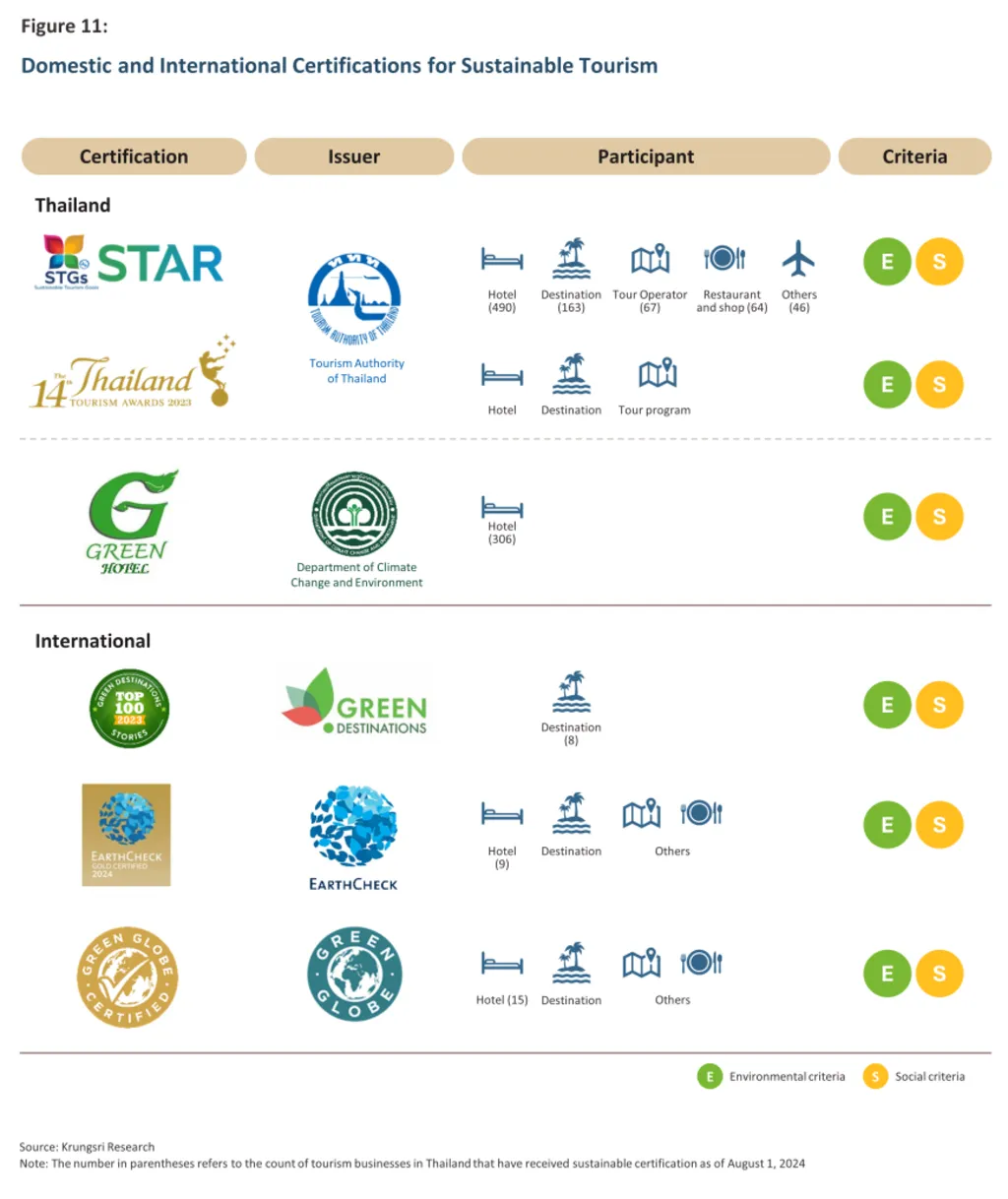Thailand is accelerating its shift toward sustainable tourism, with the sector projected to grow from USD 33.2 million in 2024 to USD 143.9 million by 2034. This 15.8% annual growth rate reflects the rising demand for eco-friendly accommodations and nature-based experiences. The movement of Thailand Green Tourism Strategy is driven by younger travelers, particularly those aged 26 to 35, who account for nearly 40% of revenue in sustainable tourism.
The government, through agencies such as the Designated Areas for Sustainable Tourism Administration (DASTA), is integrating global sustainability standards into tourism planning. These efforts aim to protect ecosystems, promote cultural heritage, and support community-based tourism that directly benefits local residents.
Thailand Green Tourism Strategy: National Carbon-Neutral Goals and Provincial Rollout
The government has set two bold Thailand Green Tourism Strategy targets: achieve carbon neutrality by 2050 and net-zero greenhouse gas emissions by 2065. These goals form the foundation for a series of carbon-neutral and net-zero tourism programs spanning all 77 provinces.

Phuket Old Town is leading by example. It aims to become the country’s first carbon-neutral tourism area by 2030. Serving as a model for other destinations, it combines historic preservation with emission-reduction measures, showing that cultural tourism and sustainability can work hand in hand.
From Measurement to Action: Cutting Carbon Emissions
The Tourism Authority of Thailand (TAT) is applying the “measure-reduce-offset” principle to guide the industry. Tools like the Zero Carbon app allow tourism operators to calculate their carbon footprint and purchase credits to offset it. This approach is already delivering measurable results.
As of 2024, more than 342 hotels have reported emissions data via platforms developed in partnership with universities and government agencies. This has helped cut nearly 87,641 tons of CO₂ equivalent. The ability to track progress with hard data strengthens the credibility of Thailand’s green tourism push.
Read Also: Eco Tourism Thailand Powers Green Shift & Wellness
Community-Led Initiatives Driving Local Impact
Beyond top-down policies, grassroots efforts are proving vital to Thailand’s green tourism transformation. In Chiang Mai, community-based tourism groups have launched "Low Carbon Homestays", where villagers use solar power, organic farming, and zero-waste practices to attract eco-conscious travelers. Similarly, Koh Yao Noi in Phang Nga Bay has trained 80% of its local tour operators in marine conservation practices, reducing plastic waste by 40% since 2023.
The Business Case for Thailand Green Tourism Strategy
Domestic travelers are also playing a big role in shaping the market. A recent survey found that 65% of Thai travelers are willing to pay more for sustainable travel options, and 51% prefer domestic, less crowded destinations. This local demand supportfs the viability of eco-friendly tourism investments and ensures that sustainability is not just a foreign tourist trend.
Public-private partnerships, including collaboration with the Thai Ecotourism and Adventure Travel Association, are helping expand carbon-neutral tourism programs. These partnerships also focus on training small and medium tourism businesses to measure and offset emissions, ensuring inclusivity in the green transition.
A Sustainable Future for Thai Tourism
Thailand Green Tourism Strategy combines national policy, local action, and consumer demand to create a strong foundation for sustainable growth. By targeting both environmental impact and economic opportunity, the country is positioning itself as a leader in eco-friendly travel in Asia. If progress continues at this pace, the country's tourism industry will not only grow in value but also in global reputation. Thailand can serve as a model for balancing growth with environmental responsibility.
FAQs
1. What is Thailand’s carbon neutrality target year?
Thailand aims for carbon neutrality by 2050 and net-zero emissions by 2065.
2. Which destination is Thailand’s first planned carbon-neutral tourism area?
Phuket Old Town aims to achieve carbon-neutral status by 2030.
3. How much CO₂ has Thailand’s green tourism programs reduced?
By 2024, hotel reporting programs had cut about 87,641 tons of CO₂ equivalent.
4. Do Thai travelers support sustainable tourism?
Yes. 65% are willing to pay more for sustainable travel options.
5. How many provinces are involved in Thailand’s green tourism rollout?
All 77 provinces are included in the carbon-neutral tourism programs.







